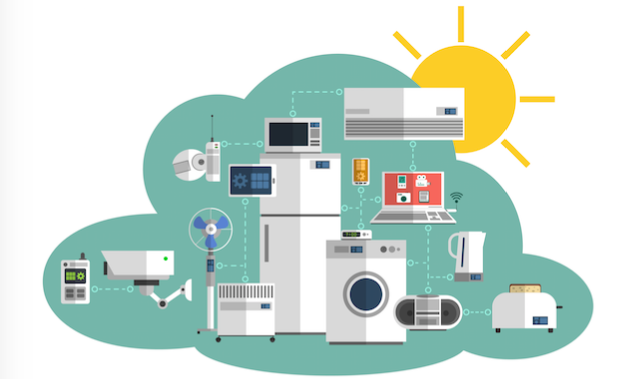Last week I talked about the back-office capabilities required to deliver a Demand Response program. In this second half of the post, I talk about technologies on the consumer side.
Automated Demand Response (ADR) is relatively mature for Commercial and Industrial (C&I) customers. It is still in its early stages for small to medium businesses (SMB) and residential customers, so this is where today’s post will focus.
Behaviour-based Demand Response (BDR) can work well and today is often the only viable way of securing demand cut for SME and Residential customers. The major drawbacks of BDR are:
- You have to target a higher demand cut than you require as you cannot guarantee all target customers will take part, nor how much they will reduce
- If your target customers reduce more than required, you are paying financial incentives and getting no value
- To secure your target Demand Response capacity, you may need to call many events over a short period, creating ‘Demand-Response fatigue,’ leading to customers opting-out. It will also cost a lot in customer engagement activities and incentive payouts.
BDR continues to have a significant role as SME and Residential technologies mature. In parallel, I would urge you to explore how and when you can move to ADR. Automation allows you to:
- Have greater certainty of your demand response targets
- Target fewer customers to achieve the same outcomes
- Call events with a shorter lead time
- Introduce new incentive structures such as a subscription model so you are not paying excessive rebates
- Call as many events as you want without creating ‘demand-response fatigue’ and having the customers start to ‘opt-out.’
Standards are still evolving, and the whole network connectivity discussion deserves a dedicated post. You do need to be across emerging standards such as Echonet Lite, Smart Energy Profile 2, and OpenADR. You also need to consider whether to connect devices across the Internet and via the customer’s local area network, or going directly into the device from the Internet, or even leveraging your advanced metering infrastructure. There are pros and cons to all of these. Despite emerging standards, many of the Demand Response Management System (DRMS) vendors are working hard to connect to many of the technologies described below. The solutions listed here are not recommendations and are not an exhaustive list; they are just to show these technologies exist. You need to do your research based on your specific requirements to decide if and when you enter these areas and what technologies to explore.
You must make sure you have an understanding of the customer segments you are targeting. For example, smart thermostats are a great technology and the most mature connecting to a DRMS. The challenge is, centrally controlled thermostats are not widely used in many parts of SE Asia, Australia, and other parts of the world so the return on your investment may not be sufficient. Do your homework first as to the technologies being used by your target customer base.
Smart Thermostats
The most mature of the consumer-side technologies. DRMS providers are already connecting to the likes of Google’s Nest, Ecobee, Schneider’s Wyse, Honeywell’s Lyric, etc.
Smart Air Conditioners
Still in its infancy but many of the major players are already starting to include communications embedded in their Air Conditioners. In many parts of the world, Air Conditioning is driving critical peak demand in many regions of the world. Examples include Samsung, L&G, and Frigidaire.
I believe it won’t be too many years before Air Conditioner manufacturers embed network connectivity as standard.
Semi-Smart Air Conditioners
I have called this group semi-smart, as the Air Conditioner itself has not been designed to communicate to a network. These solutions allow you to retrofit existing Air Conditioning units with a piece of technology so you can remotely control it and include Sensibo, Ambi-Climate, Tado, and ThinkEco.
Nest is also one to watch here. I have seen them file a series of patents so the Nest device can talk to devices over Infra-Red control. It would be reasonable to assume that the other Smart Thermostat players would also explore this path to expand into markets where centrally controlled thermostats are not used in large numbers.
Home Entertainment Systems
To date, I have not seen any examples of Demand Response programs using these technologies. I would expect this just to be a matter of time as they start to include remote control of devices into the offerings. Examples include Amazon’s Echo, Apple’s Home-Kit, Samsung’s SmartThings, Sony’s Playstation, and Microsoft’s Xbox.
Distributed Storage
To wrap up, I wanted to also talk about distributed storage. Whether this is dedicated distributed storage or the storage of electric vehicles, this will be a growth area to watch for ADR. Leveraging the energy in storage will allow customers to participate in Demand Response events without having to change settings on any of their heating or cooling equipment. Many of the leading Demand Response Management System vendors are actively developing partnerships with distributed storage manufacturers to enable such services.
Automation is the future for demand response
The journey towards SME and Home automation is picking up pace. Creating Demand Response capability and capacity take time. If you believe this is a space your organization needs to be involved in, then you need to start now. All of us with experience in trying to acquire and retain customers know it’s difficult at the best of times to get customers to care enough about switching their energy provider. We also know from other industries that the more products and services you bundle, the even less chance there is a customer will be bothered to change. I wonder if those willing to make the bold decision now will secure customers for the longer term and open up new revenue opportunities along the way.
